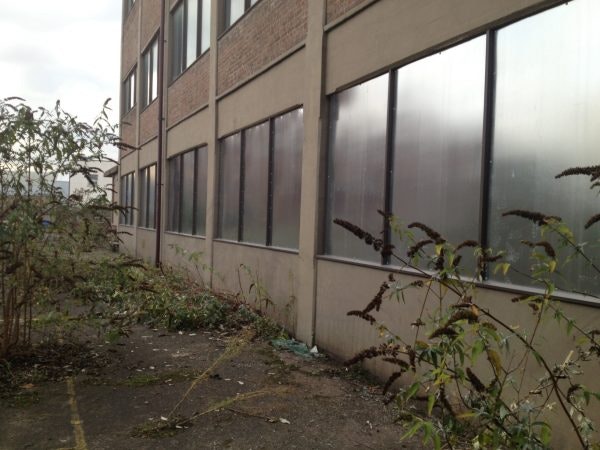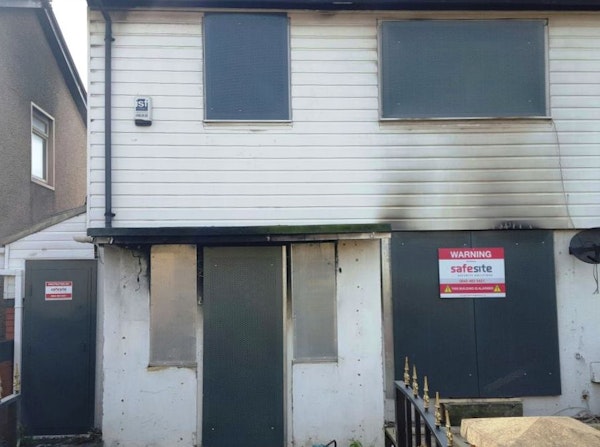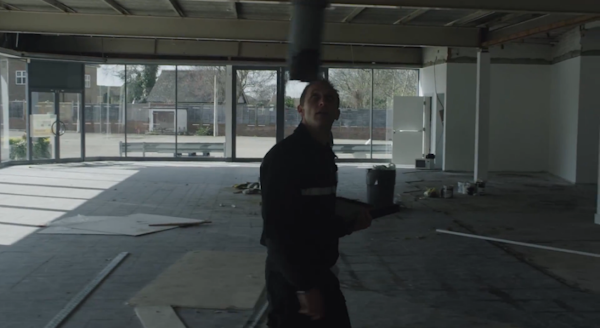- Fully qualified & insured teams
- Free site assessments
- Rapid response
- Rated Excellent
The Risks for Empty Commercial Property
Leaving any property vacant can be risky, but if your property’s commercial, then there are additional risk factors to consider. So what are all the risks you need to look out for, and how can you protect your empty commercial property, your investment – and the commercial community?
Risk #1: Theft and vandalism
Theft from empty properties is a prime reason for break-ins and commercial properties are no exception, particularly as they are seen as a profitable target for metal theft. Currently, both commercial and heritage properties are providing an easy target for organised, as well as opportunist, criminals (The Telegraph), who are likely to cause the following problems:
- Stripping down the property for items they can sell quickly, such as valuable metals …
- Copper – pipes and electrical elements;
- Aluminium – from heating and air conditioning systems;
- Lead flashings from roofs – particularly in older properties;
- Radiators – with a surprising pass-on value, radiators offer an advantage to opportunist thieves because they are often easily detachable and it’s easy to assume an empty property will have them.
- Often the effect of stripping down the premises in the search of saleable items or metals has the effect of vandalising the property which can, in turn, cause additional problems: water damage when copper plumbing or radiators have been ripped out and stolen; weather damage when the theft of lead flashings allows wind and rain to access and damage the internal structure of the building; or risk of fire from vandalised electric, gas or chemical fixtures.
- Vandalism and theft can also cause holes in the property which can give rise to other problems such as pest infestation from nesting animals who decide to make the most of the access to the property.
Reduce risk by:
Removing anything which has potential value before securing the property. If the vacancy is temporary and fixtures need to stay in situ, then shut off utilities (to help prevent water damage, or the risk of fires from electric cables or gas pipes being interfered with) and board up using solid screens so that it’s not possible for opportunist thieves to see inside the property.
It’s also the case that some individuals break into an empty property just for the chance to vandalise. ‘Tagging’ and graffiti can be common forms of vandalism which aren’t just costly to remove, but their presence can also act as a highly visible signal for …
Risk #2: Antisocial behaviour
For some groups of individuals, finding a vacant premises away from prying eyes can lead to antisocial activities such as substance abuse and even horrendous illegal activities such as dog-fighting, which has been linked to empty properties in urban areas (Liverpool Echo, 2017).
Even someone deciding to use the premises as an on-the-go toilet stop, or a convenient-for-them place to fly-tip rubbish and waste products can have a detrimental impact on the immediate environment and can quickly lead to significant health hazards. Even if those making the mess are caught, it’s still down to the property owner to meet the clean-up costs of hazardous waste (as reported by the BBC).
Reduce risk by:
- Securing all access points to the property, including perimeter access such as gates.
- Using monitored CCTV and alarm systems as a visible deterrent.
Risk #3: Arson
Arson is another form of wanton destruction of property and is also an action which carries an increased risk of harm to others. Whether there are flammable materials still laying around or not, many premises are vulnerable to arsonists, just because they’re empty. As such, fire is a particular danger not only to your property and investment, but also to neighbouring areas which may well be occupied.
Reduce risk by:
- Fully risk assessing your situation, including taking specialist advice (ie: contacting your local fire prevention team) and using available, relevant information (such as this useful resource: Code of Practice For the Protection of Empty Buildings: Fire Safety and Security).
- Boarding up the property. Installing arson-resistant steel screens rather than timber boarding can be particularly effective if your commercial property is at risk of arson attack.
Risk #4: Squatters
Squatters are individuals who inhabit and occupy a property without permission. The major risk lately comes from the fact that although squatting in residential property was made illegal in 2012, this legislation does not extend to commercial property. So, since 2012 commercial properties have been a prime target for squatters and literally any empty commercial building is at risk – from shopping centres, to clinics and public houses to individual business premises and even ‘lock-ups’.
The act of breaking-and-entering is of course illegal but if the property is not well secured, some squatters find that even the illegal entry part doesn’t require much work on their part. In fact, the police will only get involved with the problem of squatters in commercial property if criminal damage results from their forced entry into the property – and even then police involvement relates only to the entry and not the occupation.
Evicting squatters from commercial property requires significant effort – and costs – for commercial property owners and has to be done through the civil, rather than criminal, court system – something which can take a considerable amount of time, during which squatters can potentially cause a tremendous amount of costly damage to the property.
Another type of risk here comes from the fact that ‘illegal occupation’ can also apply to the overall plot – for example illegal occupation by travellers onto land surrounding the property, an issue for outlying commercial premises such as factories, warehouses and rural public houses.
Reduce risk by:
- Applying to the local council for change-of-use to residential property could help reduce the risk of ending up with squatters you can’t remove, but doing this can take time and needs to be done correctly, otherwise the change-of-use may be deemed invalid.
- Pro-active security to prevent the squatters gaining entry in the first place by:
- Securing the property using boarding up screens which don’t allow any natural light into the property (such as timber or solid steel screens).
- Turning all utilities off – this makes the property less attractive to squatters but still allows wireless alarms to function.
- Ensuring boundaries and vehicular access points are fully secured and monitored remotely.
Risk #5: Costs
An empty commercial property, particularly one which isn’t inspected or repaired regularly, can run the risk of costing you significantly:
- Unrepaired damage means repair costs can escalate;
- Removal of fly-tipped rubbish must be paid for by the property owner, not by the council;
- Accidental damage to neighbouring properties (as a result of neglecting or not addressing problems on your own property – including problems such as anti-social behaviour and squatters) can result in you being sued;
- By not fulfilling your Duty of Care – every property owner has a duty of care to anyone coming onto the property – whether you invited them in or not! Any injury to the person gaining access (even illegally) can put you, the property owner at risk of being sued for negligence of your duty of care.
This risk also applies to anyone you’ve asked to check on the property or who is there in an authorised capacity – if the property has become unsafe due to the actions of criminals and someone authorised by you visits the property and is injured (for example a contractor you’ve sent round to assess the damage) – you can be liable.
Reduce risks by:
- Securing the property – including access points, perimeter and boundaries. Key and access arrangements should be facilitated so that there can still be …
- Regular checks and inspections for the property – although these should be regular, the actual days and time of day should vary so that nothing can be predicted and ‘worked around’ by criminals.
- Installing monitored alarms and CCTV, for quick response in the event of problems. These systems can be wireless so even when utilities are turned off (which is always advisable) systems can be fully operational and, along with their signage, offer a highly visible deterrent to criminals and squatters.
Remember that even if your premises isn’t going to be completely vacant, ie: is undergoing refurbishment prior to being used for a new business, it is still vulnerable, so make sure you know who is coming and going.
Of course, it’s impossible to state every risk for every empty commercial property so conducting a thorough risk assessment on your own property is always advisable. If you need any help and support with any aspect of site security raised in this article, please contact us.
Request a free no-obligation quote
We respond in under 30 mins on average (excl. weekends)


